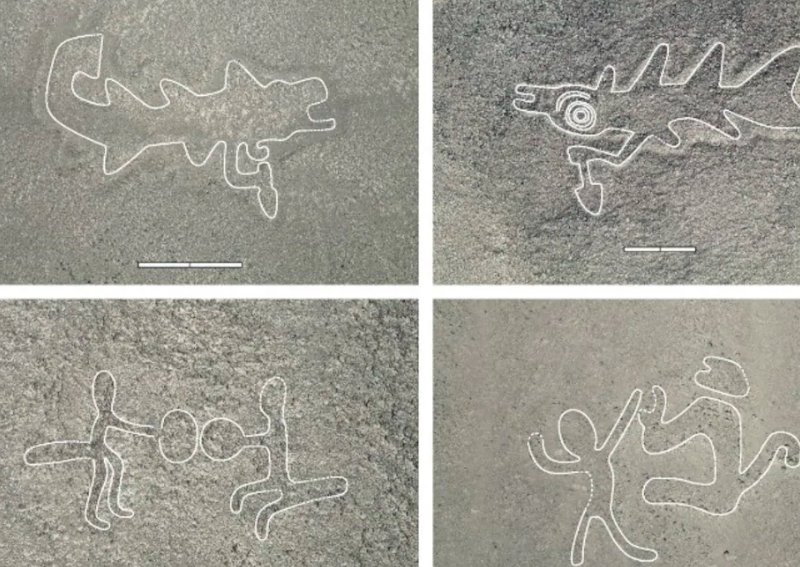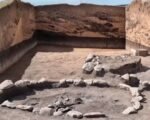In a groundbreaking discovery, researchers have uncovered 303 new geoglyphs in the Nazca Desert of southern Peru. These ancient artworks, known as the Nazca Lines, were identified using advanced artificial intelligence technology. The newly discovered geoglyphs include a variety of figures, such as llamas, human-like beings, and even a knife-wielding orca. This significant find sheds new light on the Nazca civilization, which thrived over 2,000 years ago, and their intricate and mysterious desert drawings.
The Role of AI in the Discovery
The use of artificial intelligence played a crucial role in uncovering these new geoglyphs. Researchers from Yamagata University in Japan, led by Masato Sakai, employed an AI model to analyze satellite images of the Nazca Desert. This technology allowed them to identify faint lines and patterns that had previously been overlooked. The AI model proved to be 20 times faster than traditional methods, significantly speeding up the discovery process.
The AI-assisted study revealed a diverse array of geoglyphs, including abstract humanoid figures, animals, and ceremonial scenes. One of the most striking discoveries was a 72-foot-long orca holding a knife, a figure that appears to symbolize human sacrifice. This finding aligns with depictions on Nazca pottery, where orcas are shown cutting off human heads. The use of AI not only facilitated the discovery but also provided a more comprehensive understanding of the distribution and variety of the geoglyphs.

The researchers spent over 2,600 hours manually inspecting the sites identified by the AI model. This included capturing drone photography and conducting field inspections to confirm the existence of the geoglyphs. The combination of AI technology and traditional archaeological methods has opened new avenues for exploring and understanding the ancient Nazca culture.
Significance of the New Geoglyphs
The discovery of these new geoglyphs is significant for several reasons. Firstly, it nearly doubles the number of known Nazca Lines, adding to the 430 previously identified geoglyphs. This expansion of the geoglyph catalog provides a richer and more detailed picture of the Nazca civilization’s artistic and cultural practices. The newly discovered figures include depictions of llamas, birds, and human-like beings, as well as abstract shapes and patterns.
The geoglyphs are believed to have been created for ceremonial purposes, possibly related to pilgrimages and rituals. Many of the larger figures are located along ancient pilgrimage routes, suggesting that they played a role in religious or communal activities. The presence of decapitated heads and sacrificial scenes further underscores the ritualistic significance of these drawings.
The discovery also highlights the advanced knowledge and skills of the Nazca people. The geoglyphs were created by selectively removing the reddish surface rock to reveal lighter soil beneath, a technique that required precision and planning. The scale and complexity of the geoglyphs demonstrate the Nazca civilization’s sophisticated understanding of geometry and landscape.
Future Research and Preservation
The discovery of these new geoglyphs opens up exciting possibilities for future research. Archaeologists and researchers will continue to study the newly identified figures to gain deeper insights into the Nazca civilization. This includes exploring the cultural and religious significance of the geoglyphs, as well as their role in the daily lives of the Nazca people.
Preservation of the geoglyphs is also a critical concern. The Nazca Lines are a UNESCO World Heritage site, and efforts must be made to protect them from environmental and human threats. The use of AI technology in monitoring and preserving the geoglyphs will be crucial in ensuring their longevity. Ongoing collaboration between international researchers and local authorities will be essential in safeguarding these ancient artworks.
The discovery of 303 new Nazca geoglyphs is a remarkable achievement that enhances our understanding of the Nazca civilization. The use of AI technology has revolutionized the field of archaeology, enabling faster and more accurate discoveries. As research continues, the newly uncovered geoglyphs will provide valuable insights into the cultural and artistic practices of one of the most fascinating ancient civilizations.














